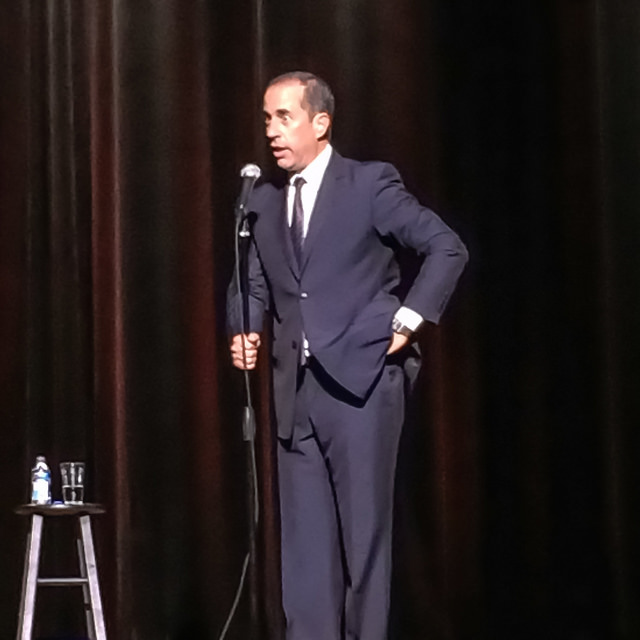- Subject:
- English Language Arts
- Material Type:
- Lesson Plan
- Level:
- High School
- Grade:
- 12
- Provider:
- Pearson
- Tags:
- License:
- Creative Commons Attribution Non-Commercial
- Language:
- English
The 'R' Word: Really, Really Overused
Contemporary Satirists

Overview
In this lesson, students will study voice in the comedy of a contemporary satirist, this time in the comic’s writing. Then students will look at their own voice in a piece of writing.
Preparation
- Read the lesson and student content.
- Anticipate student difficulties and identify the differentiation options you will choose for working with your students.
Satirical Paragraphs
- Chances are good that some of the satirical paragraphs are pretty distinctive. You should look at them in advance to find two or three that are especially distinctive so you can discuss them with students.
- The paragraphs students choose and those you have picked out in advance will likely demonstrate distinctive diction, subject matter, or syntactical structure. You can point to these as signposts of “voice” and begin to help students see what voice means.
- It may be helpful to remind students of what is specifically meant by “voice.” Note that it is unique to each writer and shows personality, attitude, and character.
- The mom and grandma questions will yield still more differences in diction and syntactical structure: the language will likely be more elevated, less colloquial or slangy. The rhythms of the syntax will be slower and more complex.
Opening
Think back to when you read one another’s satirical paragraphs and discuss the following with your classmates.
- What if you hadn’t seen the names of the writers of the satirical paragraphs? Could you have guessed who the writers were just from what was written? Which ones?
- What would be the giveaway—how would you have known?
- What if your mom had written a satirical paragraph? How would it sound different?
- What about your grandmother? How would her voice sound different?
Really?
- This is such a sarcastic letter that some students might actually miss the point; it’d be a good idea to circulate to the struggling readers early on, so they get right away where he’s headed and can take in more of what the entire letter does.
- ELL: Be aware of the language load that this text presents and support ELLs in fully understanding the meaning. Allow for additional time if necessary.
- If you have time, you might have students read the column that Seinfeld is responding to; or at least, you can summarize it for them and read aloud the first couple of paragraphs to give them context.
- Students who are more adept readers can certainly handle the original column.
- SWD: Be sure that all SWDs are engaging in the activity successfully. If you find that some students need support, consider grouping those that need extra help and work with them as a way of supporting them.
Work Time
Read a letter to the editor of The New York Times written by comedian Jerry Seinfeld.
- Annotate any sentences that help you gather Seinfeld’s point.
- What would you describe as Seinfeld’s argument? Who or what is he criticizing? What’s his point?
To see what Seinfeld was responding to, you can read “The ‘R’ Word: Really, Really Overused” by Neil Genzlinger.
You Have a Choice
You can choose whether to read and think about the text independently, with a partner, or in a small group. Or request a conference with your teacher.
Seinfeld's Voice
- Again the point here is to familiarize students with one another before they set into work more intensely on their videos.
- The constant back and forth between groups should help students see how their group’s thinking compares with that of their peers’. They may stop to reassess, and that’s good.
- You may or may not want to discuss the elements. It’s not really necessary since you’ve spent a lot of whole-class time discussing voice.
Work Time
Consider Seinfeld’s voice in your satire video group.
- Discuss how you’d describe Seinfeld’s voice. What single word would you use to describe it? Come to a consensus and select a sentence from the letter that supports your group’s thinking.
- Share your word and sentence from the letter with your classmates. Look at what your classmates shared to see if you’re all in agreement.
- Continue working in your small group. What single element works hardest to create this voice—diction, sentence structure, subject matter, details, ironies? Again, come to a consensus and select a sentence from the letter that supports your group’s thinking.
- Share your word and sentence from the letter with your classmates.
- Discuss with your classmates: is this more Juvenalian in tone or more Horatian? Why?
Your Own Voice
- One of the hardest tasks for students is assessment of their own style and voice.
- SWD: Monitor that students are not being overly critical of themselves. Support them in recognizing and acknowledging their strengths (as well as their weaknesses).
Closing
Go back to your own satirical paragraph.
- How would you describe your own voice? You might try reading your own satirical paragraph aloud to “hear” it better.
- There will be inflections that aren’t there in the writing. How can you suggest them more clearly in writing?
- What aspects help create this voice? What are the signposts of voice in your writing?
Open Notebook
Be sure to use text support from your own satirical paragraph to undergird your thinking.
Topic of Interest
- Students will select possible topics of interest that they’ll explore further.
Homework
Return to your original list of possible topics that you discussed with the class in the Closing for Lesson 22.
- What single topic interests you the most at this point?
- Make a case for it together, and share your response with your teacher.
Open Notebook